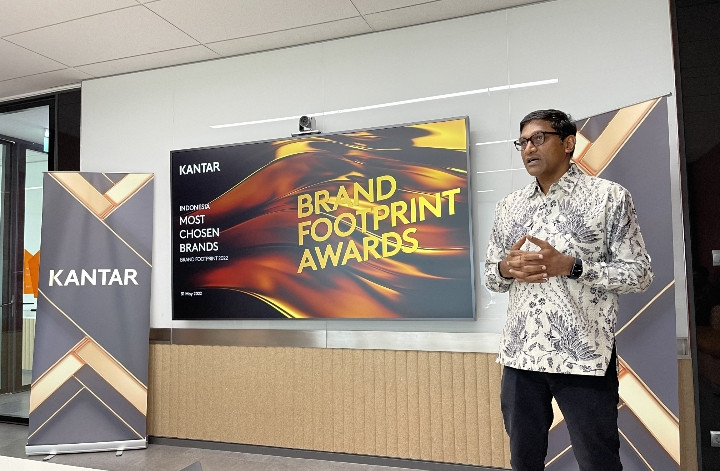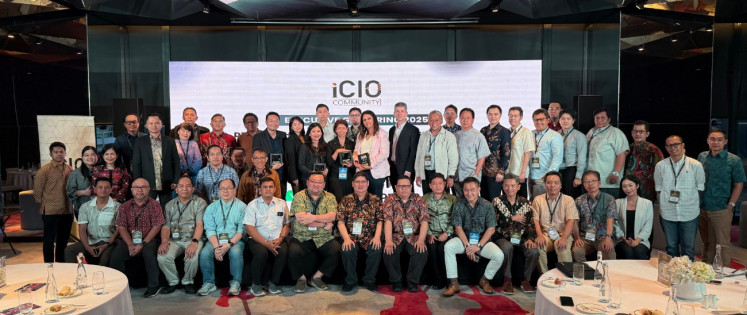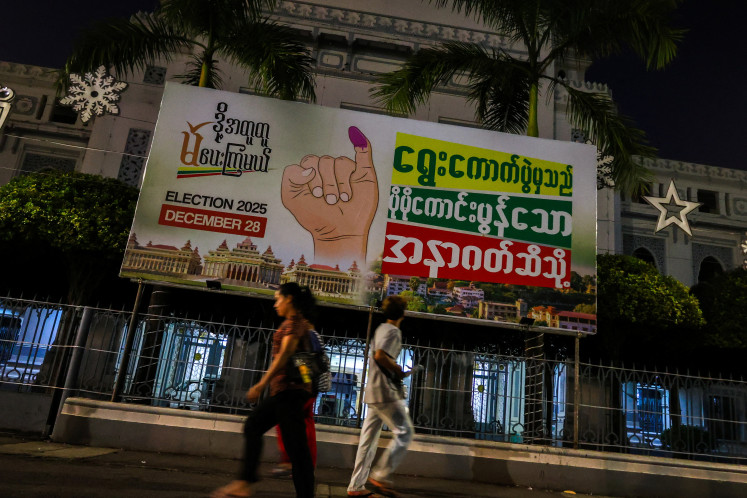Popular Reads
Top Results
Can't find what you're looking for?
View all search resultsPopular Reads
Top Results
Can't find what you're looking for?
View all search resultsKantar highlights Indonesia’s most popular FMCG brands in Brand Footprint Indonesia 2022
Kantar Indonesia, Worldpanel Division has released Brand Footprint Indonesia 2022, the latest edition of Kantar's annual study that measures brands most often chosen by Indonesian consumers.
Change text size
Gift Premium Articles
to Anyone
K
antar Indonesia, Worldpanel Division has released Brand Footprint Indonesia 2022, the latest edition of Kantar's annual study that measures brands most often chosen by Indonesian consumers.
Brand Footprint Indonesia covers over 550 brands across five fast-moving consumer goods (FMCG) sectors: food, beverages, dairy products, home care and body care. This year's Indonesia Brand Footprint study covered 97 percent of the total households in urban and rural areas of the country, representing around 68 million households.
Venu Madhav, managing director of Kantar Indonesia Worldpanel Division, said that 2021, which was the second year of the pandemic period, was a phase where consumers were adjusting to new habits that are considered the new normal.
“Mobility is gradually returning to normal, which might impact people's consumption, especially the consumption of FMCG products. Despite these ever changing consumption trends, we are happy to see that most of the Top 100 brands in the FMCG industry of Indonesia are the same brands as last year, indicating that the efforts of the Marketing and Sales teams of these brands have managed to adjust focus and remain relevant to the changing consumers’ needs,” he said.
Brand Footprint Indonesia 2022 found that the top five most chosen FMCG categories were instant noodles, biscuits, instant coffee, detergents and flavorings. Their similarities in succeeding are the closeness to Indonesian consumers, which is shown by more than nine out of 10 Indonesian households buying them on a regular basis, and are purchased more than 35 times per year on average.
Corina Fajriyani, senior marketing manager of Kantar Indonesia, Worldpanel Division explained that the study used the consumer reach point (CRP) as the underlying data to rank the brands.
“CRP refers to the number of households that bought the brand (penetration) and the number of times the brand was purchased (consumer choice). In other words, the CRP value can indicate how close a brand is to consumers,” she said.
Indomie maintains its leadership in Indonesia as the most chosen brand of instant noodles, securing its ranking at the global level in eighth position. Celebrating its 50th birthday this year, Indomie continues to stay in the top of consumers’ choices.
Meanwhile, SoKlin also maintains its leadership as the most chosen brand in the home care sector, staying in the top five FMCG brands. SoKlin’s ability to stay close to its consumers is shown by offering new product choices such as So Klin Antisep and So Klin Korean Scent as an extended portfolio to stay relevant for consumers.
For the top growing brands this year, Mama Lemon wins the fastest growing brand with 17 percent CRP growth, climbing up from fifth position last year.
Top Coffee posted remarkable growth and secured second rank in the top growing brands. The rapid growth is attributed to higher consumer choices in the brand’s range, rising up to the top five most chosen beverages brand this year. This achievement was mainly driven by its innovation of “Kopi Gula Aren”, which brought nearly 3 million new buyers to the brand. The success reflects the brand’s agility to win over consumers with relevant innovation, and is supported by brand communication.
Another outstanding brand winning in the new award category this year is Bear Brand, named The Dark-horse Brand, which refers to the fastest growing FMCG brand outside of the top 50 ranking. Bear Brand also rose to the top five most chosen brands in the dairy sector, climbing up two positions from last year. Leveraging more “moments” and occasions was instrumental to winning consumers’ choice, with more than 6 million new buyers purchasing the brand.
Concluding the study, Kantar highlighted five key methods for brands to increase their CRP and become closer to their consumers.
- More targets
By opening access to a wider target consumer, brands can improve their position in the market. One way for brands to implement this strategy is by responding to the needs of a wider target consumer, for example in terms of socioeconomic status and age group.
- More presence
Brands can expand their geographical presence to be closer to more consumers, as it is important for brands to be present across different channels to improve their availability with an omni-channel strategy.
- More categories
Brands can stretch across different categories to attract shoppers whose needs are not met by the existing portfolio; hence the brand can offer more choice to consumers.
- New needs
Brands can recognize new consumer needs in the market and proceed to establish a new segment or category and widen the consumer choice.
- More moments
Brands can create more “moments” or shopping occasions to stay relevant in shoppers’ baskets and stay close to consumers’ hearts.










